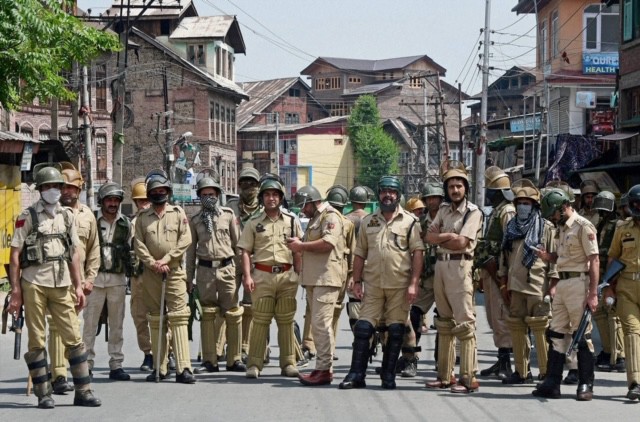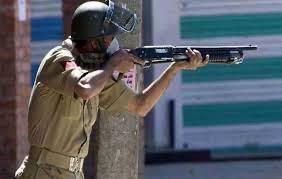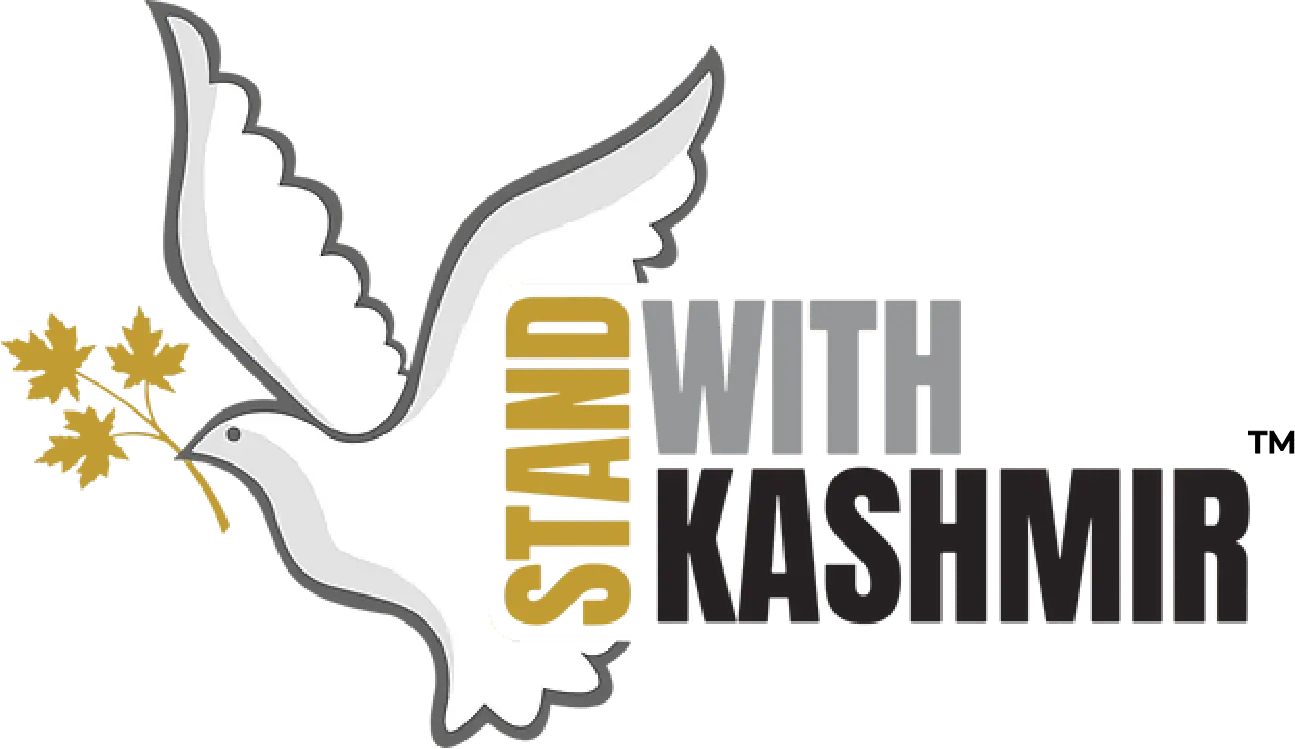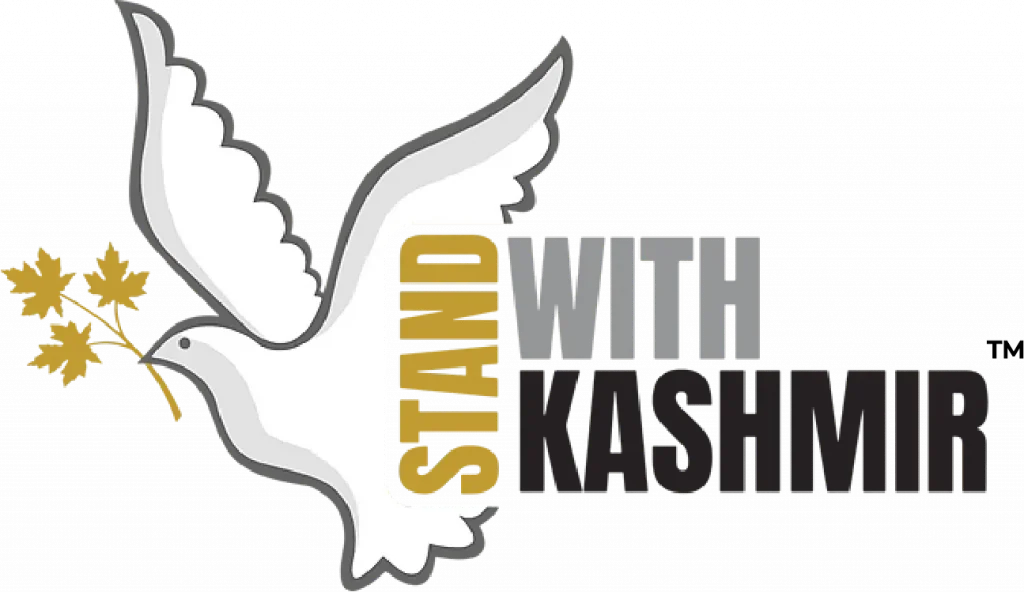The Case of Collaborators in Kashmir: Integral to Occupation & Colonization
May 13, 2020. Srinagar, Kashmir.

Photo: ANI
As with other colonial contexts, India has selected Kashmiris who — lured by power and money or coerced for various reasons — have exploited their own people. In this manner, India has managed to “divide and rule,” making it so that in many cases, the face of the Indian occupation in Kashmir has been Kashmiris themselves. For Kashmiris, these people are known as “collaborators.” From political elites to bureaucrats, police and intelligence officials, as well as varying journalists and civil society “activists” and counterinsurgency groups and informers, India has identified collaborators in every field and phase of its occupation.
Yet, the Indian media and others continue to represent these individuals as authentic voices of Kashmir, even focusing much of their attention on calling for the release of three former Chief Ministers who have been “detained” (if one can call five-star treatment that) while ignoring thousands of others since last August 2019. Kashmiris, however, are quite vocal in their disavowal of these individuals, and what they represent.
We believe it is important to understand and untangle the power structures that operate in Kashmir. Here, we identify just three types of collaborators India uses in Kashmir.
1.The Client Regimes

Photo from TheWire.In: Left to Right: Farooq Abdullah, Sajad Lone, Mehbooba Mufti, Omar Abdullah
From 1947 until today, India has identified its series of client regimes in Kashmir that it has installed without any popular consent from the Kashmiri people. These client regimes were initially tasked with securing the counterfeit accession to India and repress any alternative political imaginaries. “Elections” were held in Kashmir in a context where only pre-determined candidates who favored the accession were allowed to contest — opposition parties were not allowed. Kashmir’s “constitution,” which ratified the accession to India, was drafted in the constituent assembly in that context.
Successive elections were rigged again with the help of local leaders and candidates and every time a new regime would come to power that helped India expand its occupation. Indeed, at one point in 1957, the Indian prime minister Jawaharlal Nehru, even told the client politician at that time — Bakshi Ghulam Muhammad — to lose a few seats to keep the facade of democracy intact. India also eroded the state’s autonomy, which had been enshrined in its own constitution. Once a political leader — whether it was Sheikh Abdullah or Bakshi Ghulam Muhammad to Omar Abdullah or Mehbooba Mufti — served his/her purpose, the Indian government would find a way to remove/arrest/replace them and bring someone else to power.
Voter turnout in most of these “elections” were low, and many elections were boycotted. However, they were still carried out by terrorizing the people and brazen rigging — including the watershed 1987 election, when the Muslim United Front, which had been expected to win, lost, leading to the armed rebellion.
Politicians have been affiliated with political parties such as the National Conference (NC) — which dominated much of Kashmir’s political history — as well as the People’s Democratic Party (PDP), Congress, BJP, and now, a recently formed “Apni Party.”
A number of these parties have been formed and promoted for various ends by the Indian government’s intelligence agencies. As collaborators, they serve to promote the facade of democracy in Kashmir, and have been instrumental in killing, detaining, and torturing Kashmiris and providing complete impunity to the Indian government for its crimes in Kashmir.
2. Ikhwanis or Renegades

Photo of Ikhwan, with Kuka Parray at the center
During the armed rebellion against Indian rule in the 1990s, India created a “counterinsurgency” force made up of former or renegade militants to terrorize the Kashmiri population and silence any dissent. Called “Ikhwan” they were controlled directly by India. They operated with full impunity, engaging in loot, plunder, smuggling, murders, rapes and terrorising the neighbourhoods they grew up in. The Ikhwan were extremely deadly, and engaged in vast human rights abuses. Their purpose was to completely discredit the armed rebellion, and cause untold miseries amongst the local populace, making the cost of resistance too high. Many of them ended up becoming MLAs and received Indian national awards.
In the 1996 elections, Ikhwanis brought Kashmiris to the polling booths at gun-point to vote in candidates selected by India. Kuka Parray, one of the primary and notorious Ikhwani leaders, fought for the elections after forming the Awami League political party. After the election, he went on a rampage, killing and attacking those who did not vote for him. He received the Padma Shri in 2009.

On May 30, 1996 when Rajouri Kadal in Srinagar was to go to polling, a group of Ikhwanis stopped an autorickshaw and robbed a woman. They ran towards a BSF bunker and took shelter there. The crowd outside swelled and there was a sudden firing from inside the BSF bunker, killing a 15-year-old boy. Soon after, protests erupted resulting in more firing from the BSF which again killed a 14-year-old.
Ikhwanis from the neighborhood of Nawabadi were specifically known for their brutal nature. One in particular, Fayaz Ahmad Mir, or Fayaz Nawabadi, kidnapped and raped a young Kashmiri girl. She became pregnant and was released after some days. After this, her sister also was kidnapped. Months later, the Ikhwan dragged the pregnant girl to the center of the village, tore her clothes, and shot her in the abdomen.
Ikhwanis, physically accompanied by Indian forces, would also attack any political opponent in the region. Their main targets were people from the Jamaat-i-Islam, Hurriyat Conference, and the Jammu Kashmir Liberation Front.Their targets also included human rights activists, academics, lawyers, and journalists.
This was a way for India to use its local collaborators to eliminate the intellectuals of Kashmir.
3. Police

Photo from The Kashmir Press
The Jammu and Kashmir Police Force (the local police force in Kashmir, not to be confused for the various Indian police/army deployments) has always served at the whims of the Indian state and its various client regimes in Kashmir and has been an integral part of the militarized apparatus in Kashmir. From 1947 on, they have tortured, detained, and beaten up Kashmiris who have been resisting the Indian state. In the 1990s, a Special Task Force of the J&K Police was formed, exclusively to carry out “anti-militancy” operations. To make this force attractive, the STFs would be given high ranks and quick promotions for killing Kashmiris. They functioned without any kind of accountability.
In the 1990s, there were cracks within the police establishment, and a section among them tried to rebel, which was crushed. Since then, the checks have become stronger, and alongside the rise of the Ikhwan, they were much more militarized.
The JK Police has also had a notorious involvement with the deep state, evidenced by their role in facilitating attacks. For example, the J&K Police officer, Davinder Singh was accused by Afzal Guru in 2013 for facilitating the 2001 Delhi Parliament Attack. In January 2020, he was caught with a renegade militant on their way to Delhi, a few days before the Delhi state assembly elections. It appears that the police regularly “entrap” Kashmiris to commit various crimes in order to paint the movement for freedom in a negative light.
The police are corrupt — often extorting money from poor families who are desperate to have their children out of jails. They also facilitate the rigging of elections in Kashmir.
Most shockingly, the police have also been involved in killing protestors. In recent years they also fire pellet guns at young Kashmiris, often killing, maiming, or blinding thousands of them for life.

Photo From Brighter Kashmir
India continues to exploit divides within Kashmiri society, an age-old colonial tactic. Once they have made use of one group of collaborators, they are actively working to build a cadre of new ones. For example, today we see the case of the new party “Apni Party” led by Altaf Bukhari that will seek to “restore statehood” and protect land rights for Kashmiris.
Bukhari has claimed that he wishes to build on the legacy of Bakshi Ghulam Mohammad. The idea here is to create a narrative around development that will seek to displace the actual question of Kashmiri political rights.
This is how the cycle of violence, repression, and colonization of Kashmir continues.
Stand With Kashmir (SWK) is a Kashmiri-driven independent, transnational, grassroots movement committed to standing in solidarity with the people of Indian occupied Kashmir in ending the Indian occupation of their homeland and supporting the right to self-determination of the pre-partition state of Jammu and Kashmir. We want to hear from you. If you have general inquiries, suggestions, or concerns, please email us at info@standwithkashmir.org.








Leave a Reply